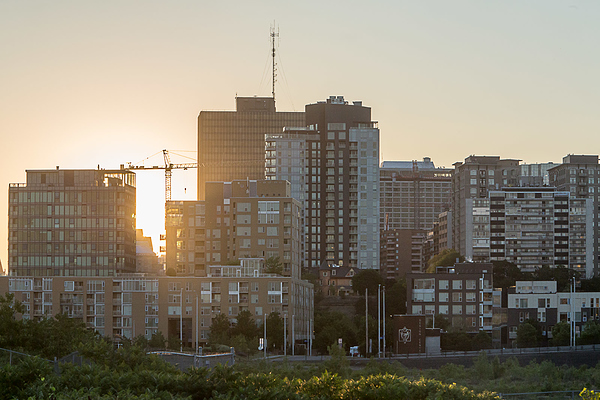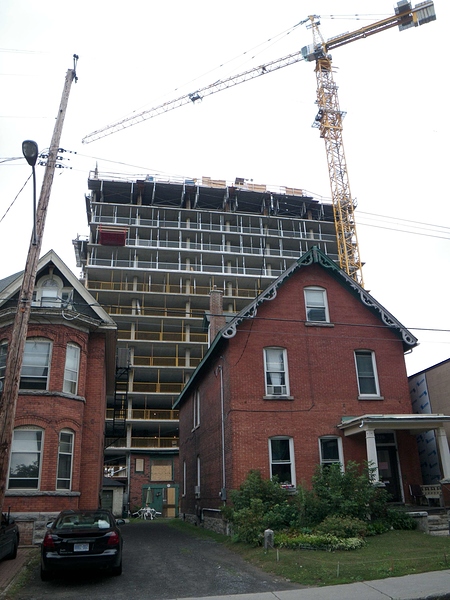In a climate crisis, Ottawa’s development standards should at least match Toronto’s

Ottawa has ambitions to be a good place to live, a sustainable city. How do we achieve our goals if our approach is hesitant, unambitious, and lagging that of other cities and communities?
Consider: Nearly two years ago, Ottawa declared a Climate Crisis. Since then, City Council has voted to expand the urban boundary with a new sprawling subdivision with tenuous social outcomes for reconciliation, and has disregarded guidelines and professional advice to plan a new road through a protected wetland. In the past five years, we’ve had two terrible years of flooding, tornadoes, and other extreme weather events.Climate change is all around us, but we don’t seem to be doing anything about it.On March 23, City Council will debate new High Performance Development Standards (HPDS), in order to advance “sustainable and resilient design” in new buildings and developments. Why are these standards important?About 80 percent of Canadians live in cities. The 10 largest cities account for half of Canada’s population. The urban built environment is responsible for about 75 percent of greenhouse gas emissions, with buildings alone producing over 40 percent of emissions. Every car on the road today will be replaced in the next decade but every building we plan and design will be here for 50 years or more. Even if every car and bus became an electric vehicle, we’ll still have to tackle more than half our GHG emissions in buildings.The economic case for investing in buildings is stronger than ever.We need to reduce our energy demand with more efficient buildings that use less energy. We need reusable (renewable) energy sources that reduce our need for new investment. We need to recycle, making better use of the buildings and infrastructure we already have. That means moderately dense infill and sustainable renewal of existing buildings.
After years of work, it is disappointing to see the HPDS so lackluster. It is less ambitious than the fourth version of a comparable standard adopted in Toronto a year ago. Where the Toronto standard applies to low-rise residential buildings of five units or more, Ottawa’s standard won’t apply to buildings of less than (about) 22,000 sq ft. That means, for example, that a three-storey apartment building with 20 apartments could be exempt, as would moderate-sized commercial buildings like grocery stores and small office buildings. While there is some value in a cut-off point to exclude very small buildings, Ottawa’s threshold is so high that the Community Associations for Environmental Sustainability assessment determined that half the new buildings in Ottawa could be exempt. If we expect our city to grow by half a million people in the next decade, they are all going to need homes, stores and places to work, learn, and play. Shouldn’t those buildings be sustainable?
Toronto’s Green Roof Bylaw has been in place since 2009; Ottawa is just coming on board. The HPDS has a goal of self-reporting on embodied carbon during construction, while Toronto’s standard sets aggressive targets for lifecycle building assessments in line with the Canada Green Building Zero Carbon Standard.
Maintenance is a major shortcoming of the City of Ottawa. In November 2020, the city’s auditor general released a report documenting what many have known for a long time: city-owned buildings are poorly maintained, with thousands of projects deferred each year, increasing costs to future generations. These projects are examples where the city can apply the HPDS to showcase not only local talent and skill in tackling climate change, but in investing in buildings to create better places for people. Council could choose, for example, to spend hundreds of millions of dollars fixing the billions in assets we already own before spending hundreds of millions more on new roads. Leadership through a City Architect could be the impetus we need.

Image: Construction in Centretown. Charles Akben-Marchand/The BUZZ
This article was also published by The Centretown BUZZ.
Toon Dreessen is president of Ottawa-based Architects DCA and past-president of the Ontario Association of Architects. For a sample of our projects, check out our portfolio here. Follow us @ArchitectsDCA on Twitter, Facebook, LinkedIn and Instagram.